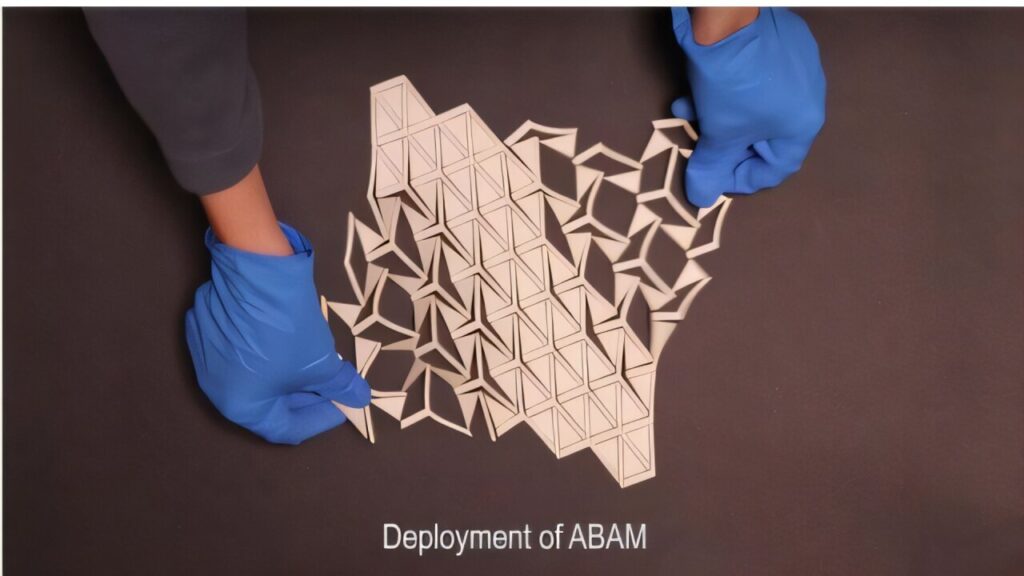In a groundbreaking study, researchers from McGill University have taken a fresh approach to an age-old art form, exploring its implications for modern technology. Their innovation lies in enhancing the diversity of stable shapes that kirigami-inspired materials can achieve, potentially revolutionizing applications in several fields. This pioneering research, published in the prestigious journal Advanced Materials, underscores the exciting intersection of art and science.
What sets these transformative materials apart is not their composition—whether crafted from plastic, cardboard, or another substance—but rather their ability to change shapes through strategically placed cuts. Imagine the intricate pop-up elements in books or greeting cards; this concept serves as a foundation for the researchers’ work. The study draws on the principles of kirigami, the Japanese art of paper cutting, combined with laser cutting techniques applied to materials such as plastic to explore various geometric configurations. By manipulating interior geometries, especially the triangle angles that form the core of kirigami structures, the researchers have unlocked new potential for shape transformation.
Traditional kirigami patterns have been known to undergo uniform scaling, allowing a shape like a square to expand into a larger version of itself. However, the McGill researchers have innovated a method where a square can morph into entirely different shapes, such as rectangles or trapezoids—a feat termed “arbitrary scaling” or “anisotropic morphing.” This groundbreaking approach has vastly increased the number of stable, transformable shapes that can serve as foundational blocks for new types of metamaterials. These metamaterials hold promise for various innovative solutions, including in the realms of soft robotics, wearable technology, and adaptable structural designs, with patent applications already underway based on these novel findings.
Damiano Pasini, a prominent figure in the study and a Canada Research Chair in Mechanical Metamaterials at McGill University, explained the significance of their discovery. “When these kirigami shapes with slits are stretched, they can be rationally designed to alter their form while maintaining a stable equilibrium. This advancement allows for objects to maximize storage efficiency and also transform to meet diverse functional demands.” Pasini noted that the development has captured the interest of both scientific and technological communities.
While their work provides crucial insights into the physical processes that create multi-stable forms with unique degrees of anisotropic deployment, the researchers view their study as a platform for limitless potential applications. “This research lays the groundwork without being constrained by a particular application,” said Pasini. “Our next objective is to explore practical uses in everyday technology.”
The trailblazing study by Chuan Qiao and colleagues, titled “Anisotropic Morphing in Bistable Kirigami through Symmetry Breaking and Geometric Frustration,” is set to inspire future innovations across multiple sectors, advancing the capabilities and versatility of engineered materials.


